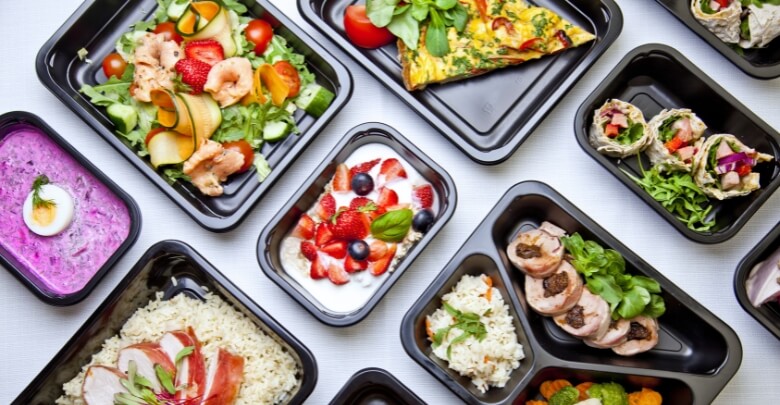Planning a conference involves numerous details, and one crucial aspect is budgeting for food. Providing meals and breaks is essential to keep attendees energized and satisfied. So, how to budget food for a conference?
Budgeting food for a conference starts with categorizing expenses by meals and breaks required per the event schedule. Analyze the program to determine meal counts accurately. Including two daily breaks impact the budget significantly, so ensure they’re accounted for in your planning to manage costs effectively.
By accounting for all these elements in your planning, you can manage costs effectively and ensure a smooth, enjoyable experience for your attendees. Follow the rest of this article for detailed tips and strategies to master the art of conference food budgeting.
Importance of Budgeting for Foods
Effective food budgeting is essential for the success of any conference, ensuring that all attendees are well-fed without compromising the financial health of the event. Many attendees like to know about the available dietary when they intend to participate a conference. Proper management can enhance the overall experience in this aspect. Here’s a detailed look at why careful planning of the food budget is so important.
Analyzing Attendee Preferences
The first step in effective food budgeting is understanding the dietary preferences and restrictions of your attendees. This insight allows you to provide meals to a diverse audience, ensuring that all participants have satisfying meal options. By addressing these needs thoughtfully, organizers can prevent waste and reduce unnecessary costs.
Volume and Scale Estimation
Accurate estimation of the amount of food required is fundamental to avoid overordering or under-provisioning. Knowing the exact number of participants and their eating habits helps in placing precise orders. Ensure you budget food for a conference considering the volume and scale precisely so that everyone gets enough to eat but also help in controlling the budget tightly.
Selecting the Right Vendors
Choosing the right food vendors is critical for budgeting. Competitive bidding and thorough vendor analysis can lead to significant savings without compromising on quality. Establishing strong relationships with reliable suppliers can also provide more favorable pricing and flexible terms.
Venue Considerations
The choice of venue can impact food budgeting significantly. Venues in Canada, renowned for hosting global events, often offer comprehensive packages that include catering. This can be a cost-effective option, especially for any upcoming global conferences in Canada, as it simplifies logistics and potentially reduces costs.
Monitoring and Adjusting in Real-Time
Ongoing monitoring of food service during the conference allows for real-time adjustments, which can be important for managing costs. Tracking consumption patterns daily provides insights that can be used to tweak orders for subsequent days. This approach ensures optimal resource use and prevents overspending.
How to Budget Food for a Conference?
Planning the food budget for a conference is an essential part of event management. Properly allocating funds for meals and breaks ensures a smooth and enjoyable experience for attendees. Here’s a step-by-step guide to help you budget effectively for a successful event.
Categorize Expenses by Meals and Breaks
When organizing an event, it’s important to categorize food expenses to maintain a clear and manageable budget. Start by breaking down costs for each meal based on the event schedule, including breakfast, lunch, and dinner. This separation helps identify which meals require more focus and investment.
Additionally, consider costs for breaks, such as mid-morning or afternoon refreshments. These smaller expenses can add up quickly, so keeping them categorized allows for better control and adjustments if necessary.
By categorizing food expenses by meals and breaks, you’ll gain a clearer understanding of where your budget is going. This approach also allows for better allocation of resources, ensuring that each meal and break is planned effectively to enhance the overall attendee experience.
Analyze the Event Program
Analyzing the event program is crucial to accurately determine how many meals are needed for your conference or event. Start by reviewing the schedule, paying close attention to the timing of sessions, networking breaks, and any social gatherings that include food.
Next, consider the duration of each break and the number of attendees expected during those times. This will help you calculate how much food and refreshments are necessary, ensuring no one is left hungry or unsatisfied during the event.
Finally, accurate meal planning helps you stick to your budget. By carefully analyzing the program, you can avoid overspending on unnecessary meals or underestimating, which could lead to a shortage. Thoughtful planning keeps everything on track, leaving guests with a positive experience.
Account for Daily Breaks
Planning for daily breaks at a conference is essential, as they offer attendees a chance to recharge. However, it’s important to account for the additional costs these breaks can bring to your food budget. Snacks and beverages are often expected, and they can add up faster than anticipated.
To manage these expenses, be sure to include them in your overall budget early on. Consider options that balance quality and cost, like offering simple snacks or refreshments that are both appealing and affordable.
Proper budgeting for these breaks ensures you provide a positive experience without overspending. By planning ahead, you can keep your event running smoothly while also managing the food costs effectively.
Consider Dietary Preferences
Considering dietary preferences is vital to creating a positive experience for all conference attendees. Offering a variety of meal options ensures that everyone feels included, whether they follow vegetarian, vegan, gluten-free, or other dietary restrictions.
While it may increase costs slightly, providing diverse options shows that you care about the well-being and comfort of your participants. It also avoids any potential inconvenience or discomfort for those with specific needs, helping to create a more welcoming environment.
Balancing dietary accommodations with your budget is key. You don’t need an overwhelming number of choices, but offering thoughtfully selected options within your budget ensures that attendees are satisfied without overspending. In the end, a well-fed group of participants will have a more enjoyable and engaging experience.
Seek Sponsored for the Conference
Securing sponsorship for a conference is a smart way to manage food costs without compromising on quality. Many companies and local businesses are willing to sponsor meals or snacks in exchange for brand exposure. This can be a win-win situation for both the organizers and the sponsors.
When approaching potential sponsors, highlight the visibility they will gain by contributing to the event. Offer to include their branding on the event materials, signage, or even a mention during the conference itself. This added exposure can make the sponsorship more appealing.
By securing food sponsorships, you not only reduce your overall expenses but also enhance the attendee experience. Well-organized, sponsored meals show attendees that the event is thoughtfully planned, and adds value for everyone involved.
Monitor and Adjust the Budget
Monitoring and adjusting your food budget is essential to successfully managing event costs. As registrations come in and the event details are finalized, your initial budget may need adjustments to accommodate the actual number of attendees and changes in food requirements.
Regularly reviewing your budget helps you stay on track and avoid unexpected expenses. For example, an increase in registrations may require more meals, while a smaller turnout could allow you to reallocate funds. Keeping a close eye on these changes ensures you can adapt without overspending.
Flexibility is key. By staying open to adjustments, you can meet the food needs of your attendees while still managing costs effectively, ensuring the overall success of the event, and keeping everything within your budget.
Food Ideas for Your Conference
You can promote the conference experience for attendees and contribute to the event’s overall success by planning the right food. Innovative food ideas add different food options for conferences that can introduce cultural aesthetics. Here are some ideas to consider for each meal and snack time:
Conference Breakfast Ideas
Start the day with a hearty breakfast to energize attendees. Offer options like yogurt parfaits with granola, fresh fruit platters, assorted pastries, and a selection of hot breakfast sandwiches. Provide coffee, tea, and juices to serve different preferences.
Conference Lunch Menu Ideas
For lunch, provide a balanced menu that includes a variety of options. Consider a salad bar with mixed greens, protein choices like grilled chicken and tofu, sandwich and wrap stations with assorted fillings, and vegetarian options like quinoa salads. Ensure there are gluten-free and dairy-free choices for those with dietary restrictions.
Dinner Conference Food Ideas
For dinner meetings, offer more substantial options that can be enjoyed while networking or during presentations. Buffet-style dinners can include dishes like herb-roasted chicken, pasta primavera, roasted vegetables, and garlic bread. Provide dessert options such as mini cheesecakes and fruit tarts for a sweet ending.
Conference Buffet Ideas
Buffets are versatile and allow attendees to choose what they prefer. Include stations for carving roast beef or turkey, pasta stations with a variety of sauces, seafood platters, and a selection of salads and side dishes. Make sure there are options suitable for different dietary needs.
Finger Food Ideas for the Conference
During breaks or casual networking sessions, offer easy-to-eat finger foods. Consider options like bruschetta bites, vegetable spring rolls, mini sliders, cheese and cracker platters, and fruit skewers. These snacks are convenient and keep attendees satisfied between sessions.
What Should You Consider When Categorizing Food Expenses?
When organizing a conference, managing food expenses effectively is crucial to ensure a smooth and enjoyable experience for all attendees. Categorizing expenses into meals, breaks, beverages, and snacks helps in planning and budgeting accurately. Here are key considerations to keep in mind when categorizing food expenses.
- Establish Dietary Restrictions and Attendee Preferences: Knowing what your attendees prefer to eat helps in planning meals that everyone will enjoy. It’s equally important to consider dietary restrictions to meet all needs.
- Assess the Timing and Frequency of Meals: Consider the duration of your conference to determine how many meals and breaks are needed. Allocate funds for breakfast, lunch, dinner, and coffee breaks accordingly.
- Consider the Quality and Variety of Food: Offering a variety of food options ensures everyone finds something they like. Balancing quality with cost is essential to meet budget constraints while providing good food.
- Evaluate the Logistics and Serving Style: Decide if meals will be buffet-style, plated, or boxed. Each serving style has different cost implications and impacts the attendee experience.
- Plan for Beverages and Snacks: Don’t forget to allocate funds for coffee, tea, water, and snacks between meals. These small touches can greatly improve attendee satisfaction and keep energy levels up.
Event Timing and Logistics
Effective event timing and logistics ensure a smooth food service experience at a conference. By effectively managing event timing and logistics, you ensure that your conference’s food service runs smoothly, contributing to a positive attendee experience.
Timing Considerations
Event timing is an important part of scheduling a conference. Scheduling for food is equally significant. Therefore, ensure precise timing to provide the attendees with a good experience.
- Schedule meals and breaks around the event’s session times to avoid conflicts. For example, avoid scheduling meals during keynotes or important sessions.
- Align meal times with breaks between sessions to maximize attendance and minimize disruption. Ensure that meal breaks are long enough to accommodate attendees without rushing them.
- For large conferences, consider staggered meal service times to avoid overcrowding. This can be managed by having multiple service stations or rotating attendees in different time slots.
- Provide options for attendees with varying schedules, such as early breakfast for early risers and late meal options for those attending evening sessions.
Logistics and Catering
Attendees can expect the advantage of amenities in a conference. The availability of tax-deductible conference meals will add more value to their expectations. So, we suggest budgeting your food for the conference considering facilities like this. Make sure your logistics are available before the conference starts.
- Plan the layout of food service areas to ensure smooth flow and accessibility. Consider factors such as traffic patterns, accessibility for attendees, and space for serving and dining.
- Use clear signage to guide attendees to food service areas and indicate where to line up or pick up their meals. Provide instructions for self-service areas if applicable.
- Communicate with vendors about cleanup responsibilities and timings. Ensure that vendors know their role in the cleanup process and have a clear plan in place.
Frequently Asked Questions
Food budgeting for a conference requires careful planning and consideration of various factors to ensure cost efficiency and attendee satisfaction. Here are ten relevant frequently asked questions to help you manage this process effectively.
What Factors Should I Consider When Selecting a Caterer?
Consider the caterer’s reputation, menu options, and pricing. Ensure they can accommodate dietary restrictions and preferences. Check if they offer flexible packages that fit your budget and event needs.
How Can I Accommodate Dietary Preferences on a Budget?
Offer a variety of meal options, including vegetarian, vegan, and gluten-free. Work with the caterer to create inclusive menus without significantly increasing costs. Prioritize flexibility and customization in menu planning.
How Important is It to Include Breaks in the Food Budget?
Breaks are necessary as they provide refreshments and rest for attendees. Include morning and afternoon breaks in your budget, accounting for snacks and beverages. This ensures attendees remain energized and focused.
What Role Does Monitoring the Budget Play in Successful Food Planning?
Regularly monitor your food budget to track expenses and make necessary adjustments. Stay flexible to accommodate changes in attendee numbers or event schedules. This proactive approach helps avoid financial surprises.
How Can I Ensure Superior Food Within a Limited Budget?
Balance quality with cost by selecting a reputable caterer offering diverse and affordable menus. Prioritize essential meals and opt for simpler options for breaks. Quality food increases attendee satisfaction without overspending.
Final Thought
Budgeting for food at a conference is essential to ensure both cost-efficiency and attendee satisfaction. Proper planning involves categorizing expenses by meals and breaks, analyzing the event program, and accounting for dietary preferences. It prevents overspending, reduces food waste, and ensures inclusivity.
Knowing how to budget food for a conference involves more than estimating costs. Attendee preferences and changes require detailed planning. Sponsorships can significantly reduce expenses while adding value to the event. It is imperative to take breaks, manage dietary needs, and consider various serving styles.
Implementing these strategies will improve attendee’s experience, increase networking opportunities, and support event success. Proper food budgeting is not just about saving money; it’s about ensuring that all attendees feel valued and well-cared for, contributing to a successful and memorable conference.








